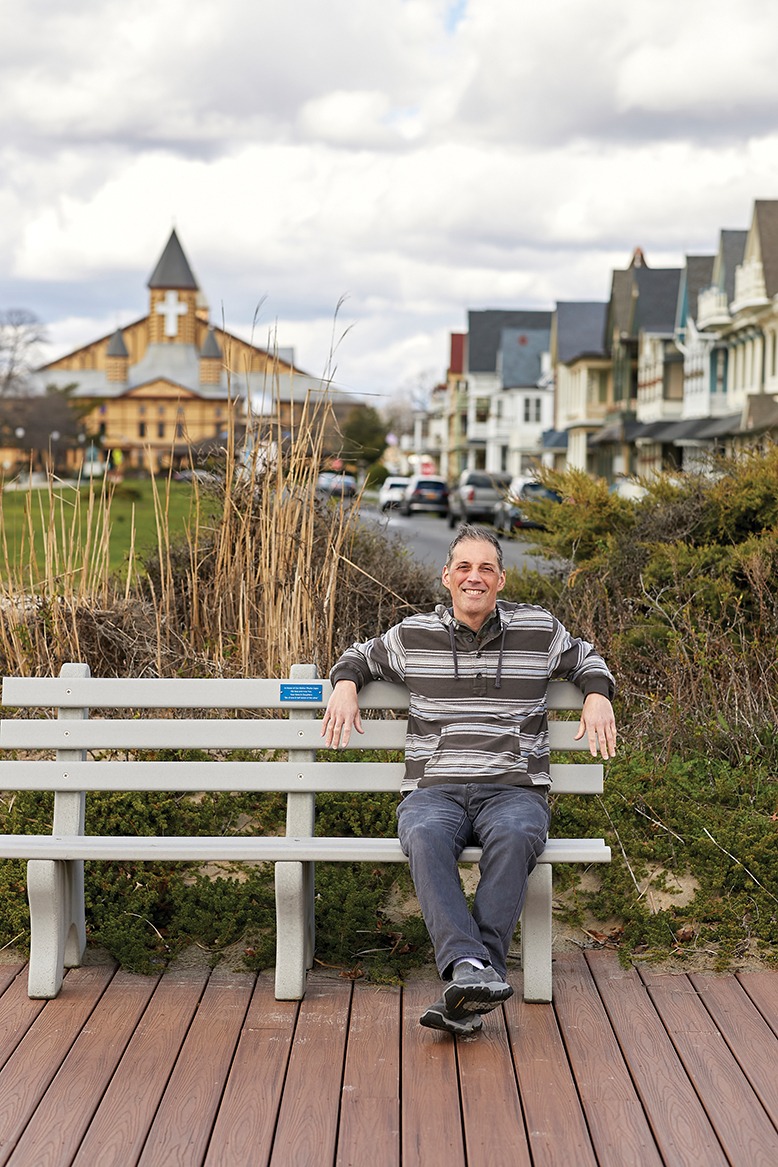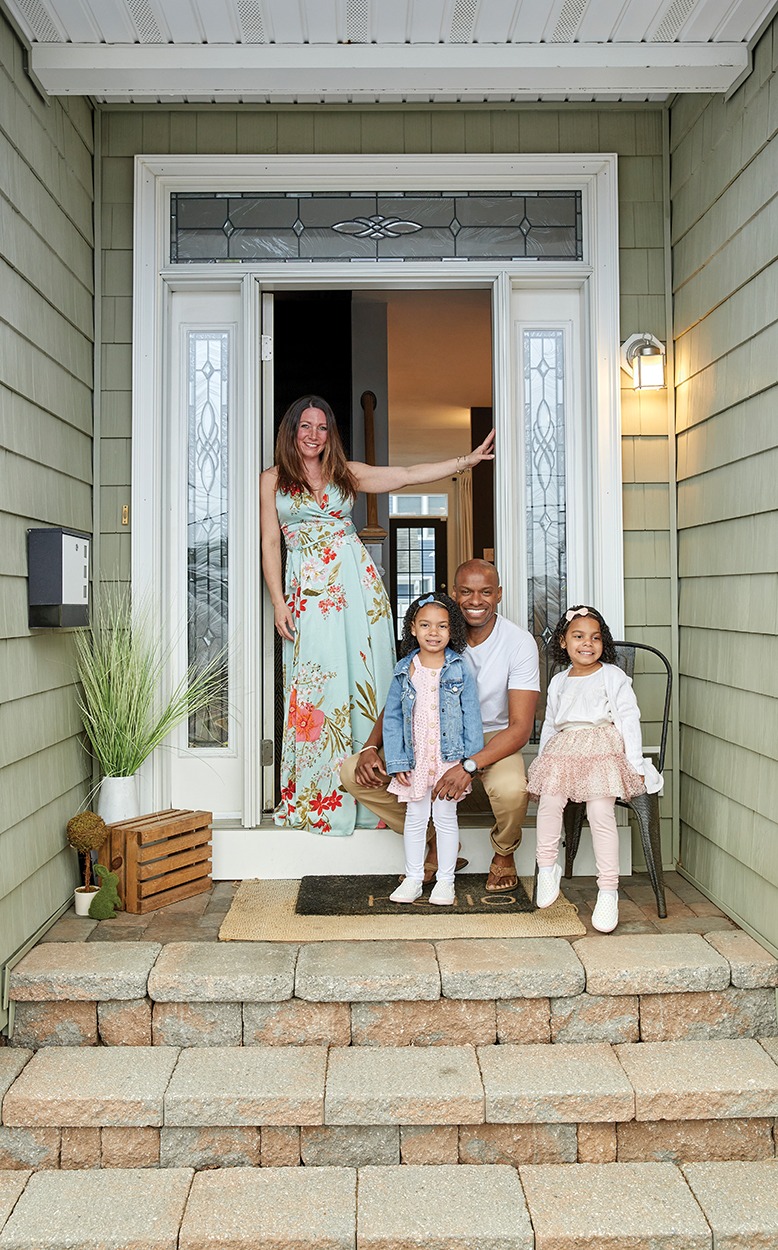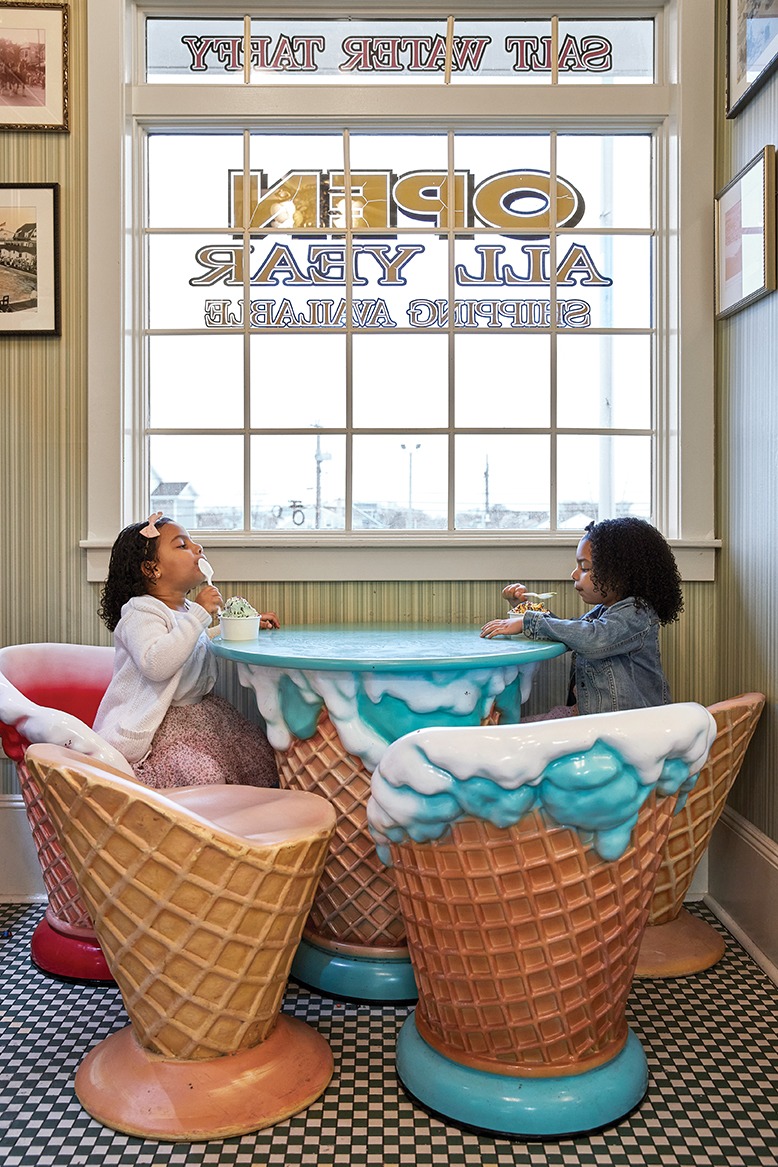
On a weekday evening in early April, the seawater and the lowering sun are conspiring to steal warmth from the air, but that hasn’t kept Jean Boyko from settling into a comfortable patio chair in her puffer coat to watch the western sky put on its nightly show. It’s the off-season in Lavallette, but not for Boyko who, in 2018, moved year-round to this town one-third of the way down the Jersey Shore and some 75 miles from her former home in Nutley, just west of Manhattan.
In doing so, the retired chemist traded a spacious backyard for one significantly smaller. Her new view, on the other hand, feels close to infinite, encompassing the sparkling bay just a few feet from her patio and a sky that seems to stretch on forever, now blushing a fierce pink as the first lights blink on across the water. “When I see the calm water in the cove behind my house, I get such a peaceful feeling,” she says. “It’s my happy place.”
The Shore as a whole has become the year-round happy place for a growing number of urban and suburban transplants, who list among its draws the mesmeric pull of the ocean, the sense of calm conferred by daily walks along the beach or the boardwalk, and the appeal of a way of life that, at least during the nine months constituting the off-season, is slower and somehow saner than the urban grind or the car-centric suburban slog.
But there’s something else going on. In years past, most afficionados of the Shore were happy to brave Parkway traffic for a weekend day trip or to visit a second home in the summer. But sometime over the past decade, an increasing number of folks have decided to dip their toes into beach life year-round. A recent report by the New York-based national moving company Piece of Cake revealed that two of the state’s most popular regions for transplants were the Shore counties of Monmouth and Ocean, and brokers up and down the Shore report a growing influx of year-round residents. In fact, in its list of the top 10 New Jersey towns with the highest real estate appreciation over the past two decades, the website Neighborhood Scout lists six on or near the Shore (Bradley Beach, number 1; Lakewood, number 2; Stone Harbor, number 5; Ocean Grove, number 7; Wildwood Crest, number 9; and Avalon, number 10).
Pandemic-fueled exodus
The pandemic, of course, helped turn what was a trickle into a steady stream. Colleen Camillo, president of Monmouth Ocean Regional Realtors, notes that the number of buyers looking to move to the Shore year-round began to rise noticeably after the Covid-19 lockdown of 2020.
That trend was precipitated by two main factors: people’s newfound ability to work remotely, which started to look more permanent than temporary as the pandemic wore on, and a desire, on the part of many, to flee the cities, with their empty streets, wailing sirens and climbing Covid rates. “With Covid,” Camillo says, “everyone was fleeing to the beach. They wanted to be outside.”
She’s observed the trend firsthand in the Shore-adjacent towns she lives and works in, Middletown (on the Raritan Bay) and Oakhurst. “Normally,” she says, “you’d see New York license plates on the weekend. Now you see them all the time—until they get them transferred over to Jersey plates.”

Sal DeStefano moved full-time to Ocean Grove during the pandemic. Photo by Laura Moss
The pandemic also turned Shore part-timers into year-rounders. Sal DeStefano, an advertising-art freelancer, bought his second home in Ocean Grove in 2010 while living in Manhattan, but gradually fell in love with Ocean Grove’s slower pace and neighborly feel. “There’s a reason people here call it Mayberry by the Sea,” he says, referencing the setting for the 1960s sitcom The Andy Griffith Show, which has become a kind of archetype for close-knit, small-town living. “This is very much a porch community,” he adds. “When you’re sitting on your porch, people have conversations with you just walking by.”
Then there was the growing restaurant scene in Ocean Grove and other towns, most notably Asbury Park, where he could also take advantage of the music scene. He’d started spending half the week in Ocean Grove in 2016, but Covid convinced DeStefano, who works remotely, to transition to year-round Shore life, and he hasn’t looked back.
DeStefano has made renovations to his 96-year-old house, but other Shore transplants take renovation a step further. “At least 50 percent of our clientele are people who’ve had a summer house for years—sometimes it’s been in their family for 75-plus years—and are knocking it down and moving here permanently,” says Terrance Hegel, whose company, Atlantic Modular Builders in Manasquan, builds homes in Monmouth and Ocean counties.

DeStefano unwinds in his neighborly beach town of Ocean Grove. Photo by Laura Moss
In that sense, the move to year-round Shore living is helping to accelerate the gentrification of once working-class communities, like Brick and Ortley Beach, that began in the wake of 2012’s Hurricane Sandy, as bungalows increasingly gave way to larger, flashier houses.
Hegel notes that many of these new builds belong to what he describes as “empty-nesters in their 50s and 60s.” Some may be retired, but others are also taking advantage of the opportunity to work remotely. Many in this age group, he says, consider a Shore house an incentive for children and grandchildren to visit. Joanne Marino, an interior designer and owner of the home furnishings store the Beach Home in Lavallette, has worked with, and sold to, quite a few of the area’s recent transplants and says that “many have made the move for the family, thinking, If I build it, they will come—and bring the grandkids.”
Young families embrace Shore living
Over-50s and retirees aren’t by any means the only demographic making the move to year-round Shore living. John Seniszyn, a partner in a project-management group, and his wife, Sam, a sales manager in corporate furniture and design, moved from Jersey City to Spring Lake Heights in December of 2021 with their then newborn, Miles. They’d always planned to move to the town where John spent virtually every summer at his family’s beach house, but, says Sam, “the pandemic only hastened our plans. Our working habits were evolving and giving us more flexibility as to the number of times we were needed in the city.”

Jerry and Angel Sarfo-Darko and their two daughters love living in Point Pleasant Beach. Photo by Laura Moss
Jerry and Angel Sarfo-Darko moved full-time from Binghamton, New York to Point Pleasant Beach well before the pandemic, in August of 2016. Though neither is from New Jersey—he hails from Connecticut and she grew up in upstate New York—they had made frequent visits to Jerry’s former college roommate in Point Pleasant, and fell in love with the area. A nurse anesthetist at Community Medical Center in Toms River, Jerry finds respite from the frenetic pace of his job with evening beach walks. “After working a long day at the hospital,” he says, “I come home and walk over to the beach and forget that I worked that day.”
In spite of the influx of newcomers, the off-season is still much quieter than the summer, and may be too quiet for some—but not for the Sarfo-Darko family, which now includes two preschool-aged daughters. In the summer, Point Pleasant’s cool-weather population of 5,000 swells considerably, and day-trippers to the town’s famous boardwalk make it feel even more crowded. But come September, Jerry says, it becomes a small community again. “You end up knowing all your neighbors and their children and the owner of the bookstore and the librarian, and the school is so small. I feel like I live in a bubble—a very nice bubble.”

The Sarfo-Darkos’ daughters relish ice cream on an April day in Point Pleasant Beach. Photo by Laura Moss
Since the pandemic, Angel adds, more families with young children have moved into the community, which was already kid-friendly, even in the off-season. “Our girls saw Santa a dozen times last year—no line,” Angel says.
Not always beachy keen
Other year-rounders are somewhat less sanguine about the off-season. Jean Boyko, for instance, says: “Pluses are the lack of traffic… The minuses are that some of the businesses close, and there are fewer restaurants open.” As the population of full-timers increases, Joanne Marino notes, the number of year-round businesses is slowly growing.
You’d expect that predictions of sea-level rise—the National Oceanic and Atmospheric Administration has warned of a one-foot rise between now and 2050—would constitute a significant minus, but ever-escalating real estate prices along the Shore suggest otherwise. Boyko, though, is concerned. “My house is at a 6.5-foot elevation, and the recommended elevation for my area to withstand another 100-year storm is 7 feet. So if another Sandy comes, I’m in trouble,” she says.
Neither that worry nor frustration about what is being done regarding climate change has made her rethink her decision to make the Shore her permanent residence. “Basically, love of the lifestyle, without being too far from family, overrides my concerns,” she says.
Another potential minus, depending on the town, is education. The Shore isn’t without its top schools: Highlands, Neptune, Wall and Point Pleasant Beach each boasts a high school ranked among U.S. News & World Report’s top 100 in the state (Marine Academy of Science and Technology, number 11; Monmouth County Academy of Allied Health and Science, number 17; Communications High School, number 33; and Point Pleasant Beach High School, number 85, respectively). But other beach towns fall below educational par. While some parents appreciate smaller class sizes that come with many Shore schools, others have moved to Shore-adjacent towns in search of better educational opportunities.
Tom Anthony (a pseudonym), for example, was a pioneer, buying a house in Asbury Park in 2001, long before its vaunted renaissance. But when his son was one year old, he and his wife moved to Bergen County. And when they decided to return to the Asbury area in 2016, they chose to buy in Ocean Township, an inland town adjacent to Asbury with a higher-rated school system. “A pioneer may put up with all the challenges of pioneering,” he says, “yet want the best, safest education for their child.”
Demand grows—and so do prices
Towns like Ocean—near, but not on, the Shore—are seeing their own influx of transplants, and these new residents aren’t just arriving in search of better schools. “Because the prices have grown so quickly in the Shore towns, we’re finding a lot of our buyers are moving west, and prices in those towns are also going up,” says Brenda Connolly, owner of the Connolly Agency in Avon-by-the-Sea.
It doesn’t help, of course, that real estate inventory—on the Shore, around the state, and across the country—is at historic lows. Though it’s not a good thing for buyers, it does have an upside: “We’re not likely to see these new year-round residents make a major impact on services in the Shore towns because of that low inventory—we’re talking an average of three houses on the market per town,” says Connolly.
Low inventory and high demand prevail throughout Shore towns. Nathan Colmer is a real estate agent with the Van Dyk Group on Long Beach Island and a lifelong LBI resident. He says that, as it did elsewhere on the Shore, the influx of year-rounders began just after Sandy. Covid accelerated the trend.
In addition, he says there are many more people who own summer homes on LBI but are living in them for much more, if not all, of the year. He notes that, on this cool evening, he’s planning to go out to eat with some friends who recently moved to LBI full-time from Bergen County, and they’re headed to a restaurant that’s never before been open this early in the year.
He explains why he loves living at the Shore all year: “If it were busy all the time the way it is in the summer, I wouldn’t like it as much, and if it were quiet all the time the way it is in the off-season, I wouldn’t like it as much…It’s always changing.” It’s a sentiment that no doubt would be echoed by most other year-rounders, from Keansburg to Cape May.
Leslie Garisto Pfaff, a longtime contributor, would very much like to be a year-round resident of the Jersey Shore, if she can just get her husband onboard.



